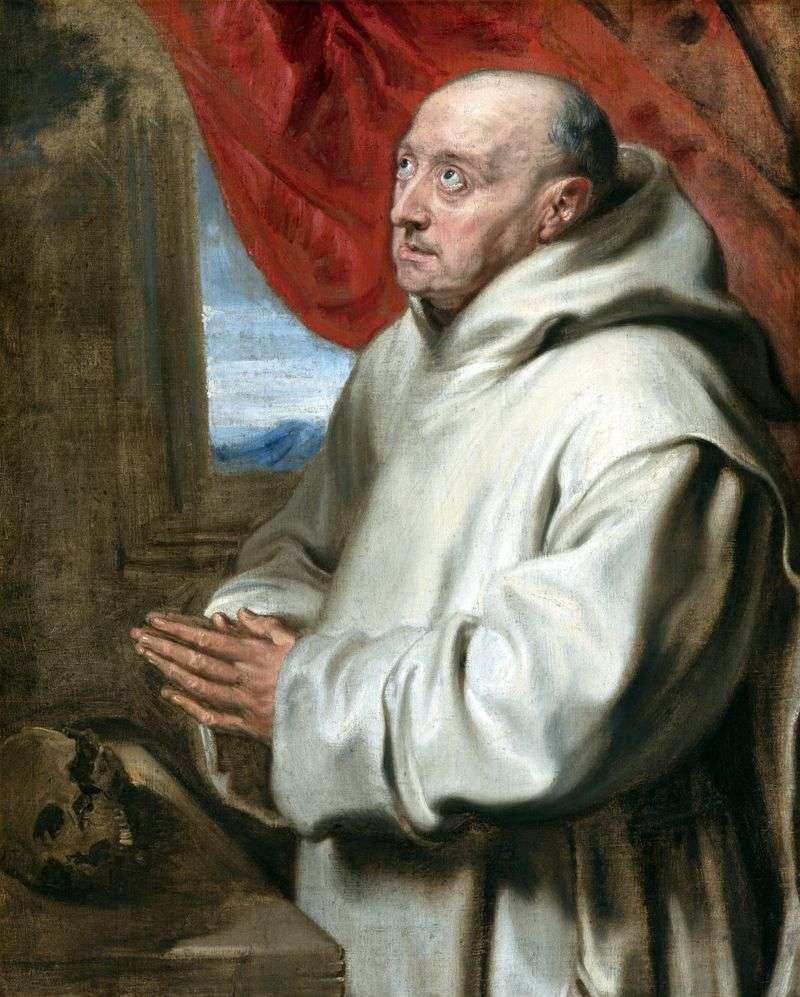
The painting “Saint Bruno” is supposed to be performed by the Flemish painter Anthony van Dyke in the early period of his work, when a young artist, already admitted to the St. Luke’s guild and having his workshop, helped Peter Paul Rubens to paint the Jesuit church in Antwerp.
On this canvas, Saint Bruno is depicted during a prayer in his cell. The strong light body of his figure is shown in three-quarters against the background of a half-curtained window, in which the blue distances of the surrounding landscape are barely discernible. To give the image of the saint greatness and monumentality, the artist has him in the foreground of the picture, as close to his character as possible to the viewer. Van Dyck emphasizes the power of an idealized image with the help of a stream of light falling from above.
Lighting here carries an important semantic load: light is a symbol of Christ, it is to him that the eye of Saint Bruno looks. The portrait face is depicted large and boldly, the master’s attention is focused on him and on the hero’s hands. Any additional attributes in work are absent, and clothes are extremely simplified.
Draperies are made with wide strokes with strong light effects and deep shadows. The canvas is sustained in a warm color scheme, built on a combination of red, beige and brown tones.
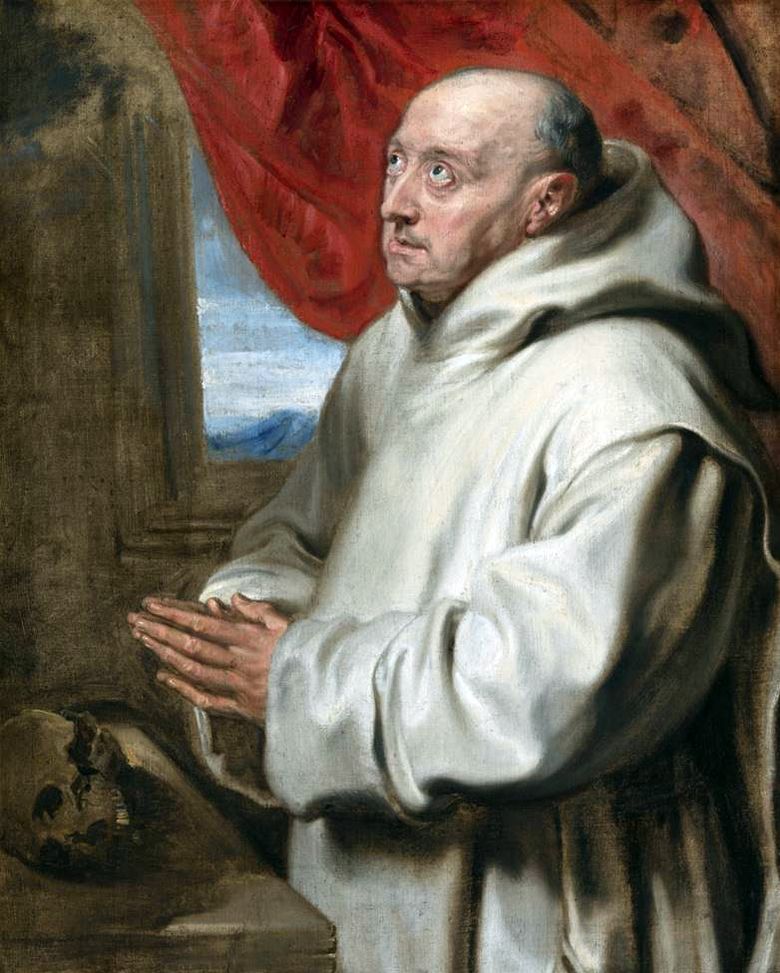 Saint Bruno – Anthony Van Dyck
Saint Bruno – Anthony Van Dyck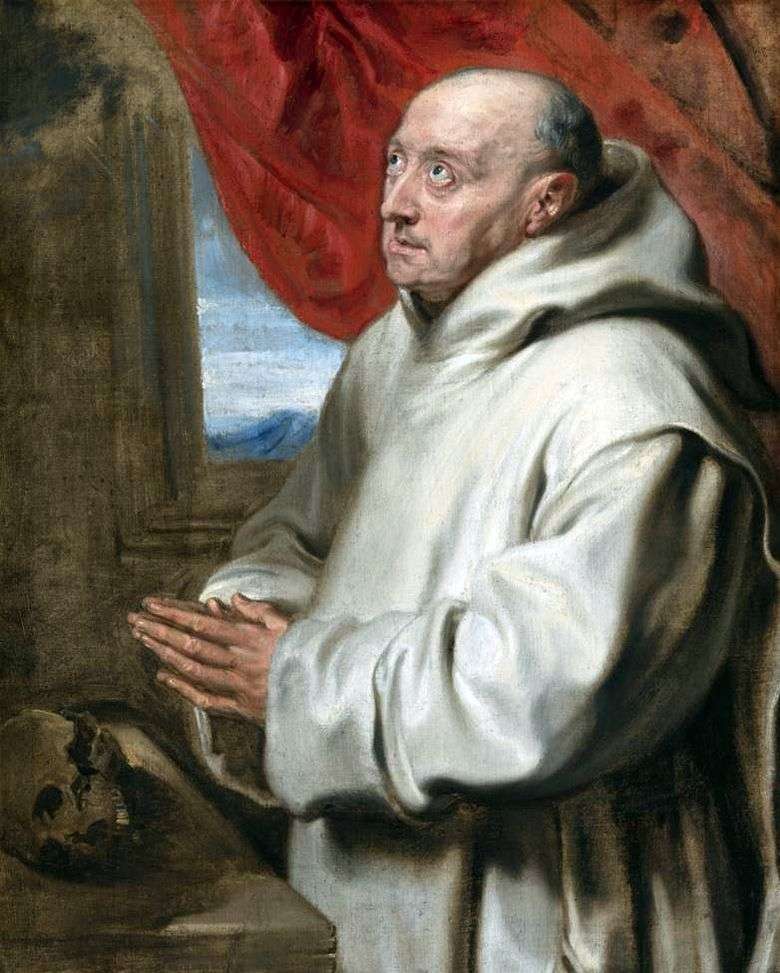 San Bruno – Anthony Van Dyck
San Bruno – Anthony Van Dyck Charles I, King of England, on the hunt by Anthony Van Dyck
Charles I, King of England, on the hunt by Anthony Van Dyck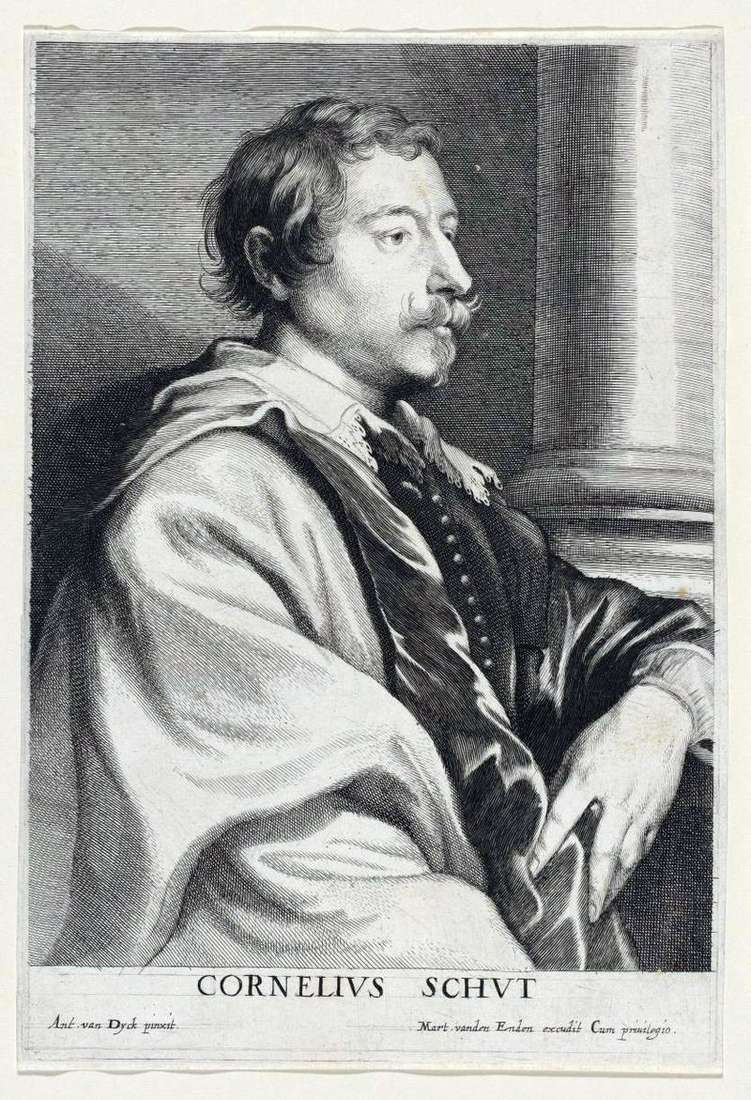 Portrait of Cornelis Shata by Anthony Van Dyck
Portrait of Cornelis Shata by Anthony Van Dyck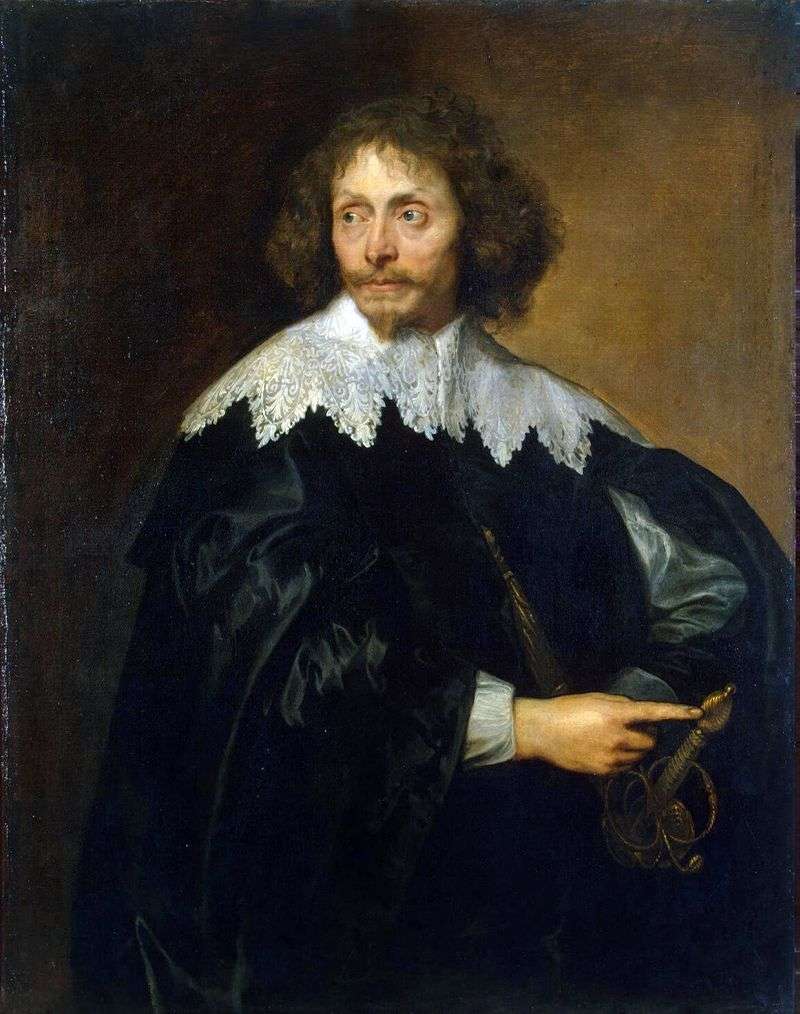 Portrait of Sir Thomas Chaloner by Anthony Van Dyck
Portrait of Sir Thomas Chaloner by Anthony Van Dyck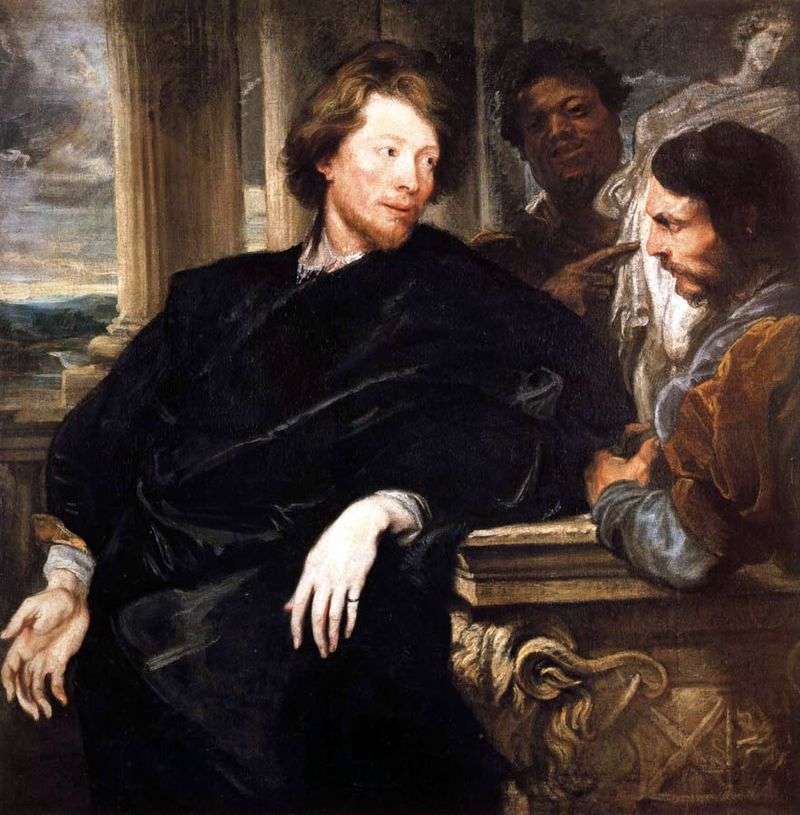 George Gage with two assistants by Anthony Van Dyck
George Gage with two assistants by Anthony Van Dyck Equestrian portrait of Charles I by Anthony Van Dyck
Equestrian portrait of Charles I by Anthony Van Dyck Portrait of James Stewart by Anthony Van Dyck
Portrait of James Stewart by Anthony Van Dyck